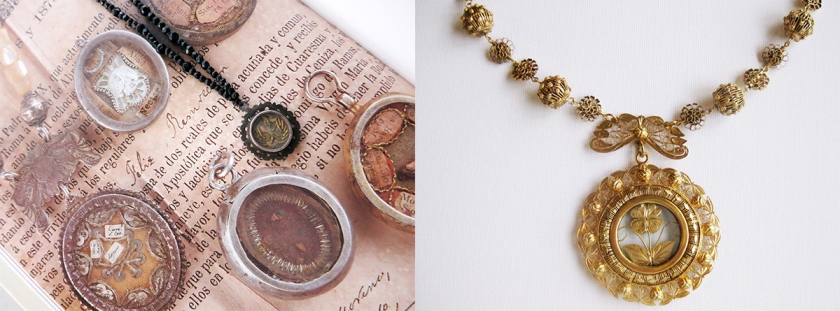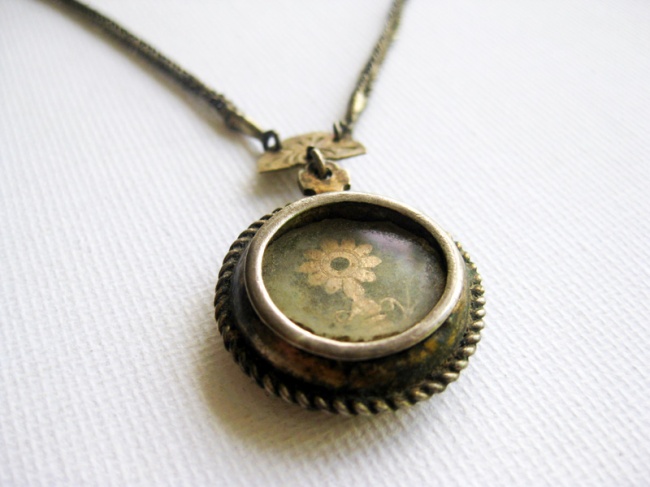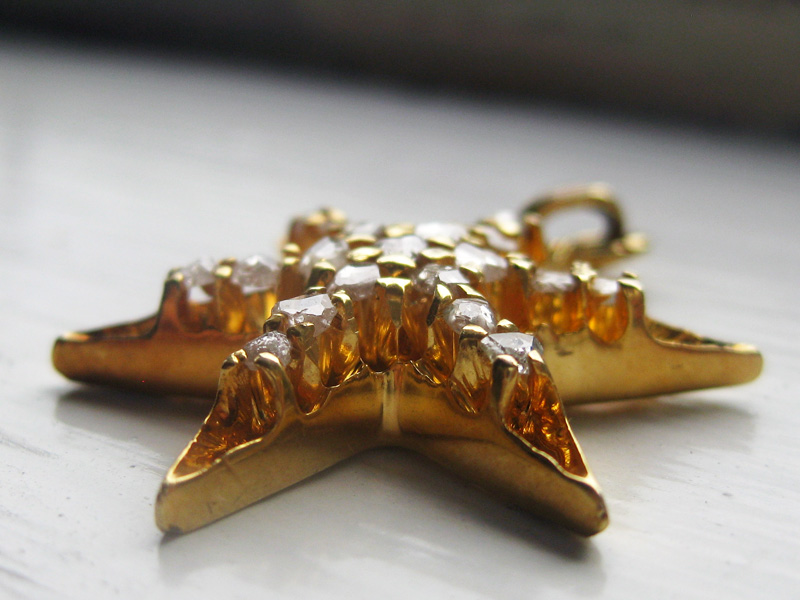
Remembering Ramon Villegas


Some Filipinos have an aversion to wearing old jewelry especially if they don’t know who wore it before. I heard that some believe that if the person who previously owned the jewelry had violent tendencies, then the next person who wears it will be like that too. How strange. It’s funny though. Oh, if they only knew where some of the “new” jewelry they buy in retail shops come from. We, Filipinos love to buy jewelry. Not only it is a good investment but when times are hard, it can easily be converted to cash. Some do this by going to pawnshops. Just look around in the Philippines, there’s always a pawnshop near you.
But what happens if you can’t redeem what you pawned due to lack of cash? Well, the pawnshop includes it in their items for auction or locally referred to as “subasta”. The pawnshops put them in lots according to their value. These lots are then auctioned off to jewelry dealers or volume buyers. When I say “volume buyers”, I mean jewelry dealers with deep pockets! The dealer can either melt the gold, separate the gemstones or sell the items “as is” to retail jewelry shops. The melted gold will be made into new jewelry while the loose gemstones will be resold and reset into new designs. Those that are sold “as is” are repaired and cleaned up to look new. Then they get sold as new stocks again. Now, as a person who likes to recycle, I love this practice. But to someone who might be opposed to wearing something old, well, your “new” jewelry might not be what it’s cracked up to be.
Losing a loved one is never easy but losing someone during the holidays somehow magnifies the sadness. The recent holidays were difficult as my father-in-law passed away. My husband looked up to him and my children adored him.
During the mass before the inurnment, the priest said that a person can die three times. The first one is when he stops breathing, the second one is when he is laid to rest and the third time is when we forget the deceased.
I lost my Dad when I was still in college. It was heartbreaking to see my Mom hold on to my Dad’s old shirt just so she can remember how he smelled like. Over the years, I have forgotten how his voice sounded like.
I look around my home and realized that save for a few pictures, I don’t have anything my Dad owned. Good thing my Mom recently gave me his abacus which he was oddly trying to learn at that time. 🙂
It is easy to forget because healing from mourning sometimes entail forgetting. But if forgetting means dying for the third time, I am determined to do everything I can to keep their memories alive.
When the time is right, hopefully I can keep a memento of my father-in-law. It will be in a special place right beside my Dad’s abacus so my children will not forget that they have two wonderful “Lolos” (grandfathers) who are looking down on them.
Last Saturday night, I got a text message from a friend telling me that I was featured in Manila Bulletin newspaper’s Friday lifestyle section. Note to self, buy newspaper. It was an ALMOST full page article!
Then this morning, another feature on The Happy Blog! Happy news on a rainy day! Sharing the links below:
http://www.thehappylab.com.ph/latest-post/heirloom-pieces-tambourine-jewelry/
and
You probably have seen them around. Those unusual looking vintage pendants that have something inside them- some are flat while some are bulky with glass-encased designs in the middle. They are called reliquaries or locally known as “relikaryo”. In simplest terms, these are containers for holy relics made popular during the medieval times.
Reliquaries were made to hold sacred items such as the bones or hair of a saint or a religious figure. Yep, you read that right. It may also contain a piece of material that the saint used or touched such as a piece of clothing. Older versions of reliquaries kept the relic hidden but later on, glass was added on the pendants to show what was inside.
Similarly, the “relikaryo” pendants that usually accompanied the old traditional Filipino tamborin necklaces were originally hidden inside the garment. Later on, these necklaces were worn in full display.
These relikaryo pendants are ornate and meticulously handcrafted. The quality of the antique ones are especially breathtaking. They are usually oval-shaped. Older versions of the relikaryo contained only religious relics or themes like a crucifix, monstrance or chalice, a prayer or a fabric but by the 19th century, nature-inspired themes such as flowers and leaves were introduced. They were made to be opened so you can put the relic inside but nowadays, a lot of these relikaryo are glued shut not just to keep whatever is inside but also to prevent the glass frame from falling off. Some were made of gold while others were in silver or gilt copper.
These heirloom pieces are becoming harder to find, with the bigger-sized reliquaries in even higher demand as they are quite rare.
Interestingly, the more popular locket traces its roots back to the reliquary.
One of the challenges in selling antique jewelry is making the prospective buyer understand why a certain piece could fetch a high price.
Bear in mind that it’s not like fine modern jewelry where majority of the price is factored in the gold or silver content along with the weight of the item. While gold is definitely more expensive than silver and brass, craftmanship plays a big role. Some things just can’t be duplicated anymore. If you hear someone say “antiquity”, it’s not just because it’s old but they are mostly referring to the fine craftmanship that is so hard to find nowadays.
One time, I asked a jewelry shop if they can make vintage-inspired gold-plated silver pendants for me. I was surprised at the prices they quoted. When I asked if it would make a big difference in the cost if I change the material to gold-plated brass, they said it wouldn’t bring down the price much. Bulk of the cost is labor. Not only does it take a longer time to make but there are very few goldsmiths or silversmiths who can make it. One even told me to just buy an antique, it will come out cheaper with better quality!
Personally, I would choose a finely-made silver antique over a newer gold piece simply because you can always buy gold but you can’t get the same craftmanship of a good antique. Rarity can bring up the value too like the bigger-sized pieces such as those “relicario” or reliquary pendants or those intricately made “alfajor” or lace-like chain from tamborin necklaces.
Also, antique gold is normally 10K or less. Most pawnshops won’t even accept gold that is less than 14K. When I asked a reputable pawnshop what she thought was the value of a less than 10K gold earrings with diamante (rough cut diamonds), she smiled politely and shook her head. It wasn’t worth much was what she was trying to say.
Diamante or rough cut diamonds are hardly worth much commercially. Most jewelry and pawn shops won’t even be able to put a value to them as they are “just left-over pieces” when you cut a diamond. But to an antique jewelry collector, the subtle sparkle, the unusual cut or setting, the rarity, the quality – all those things that are not quantifiable are what truly makes a piece valuable.
Hello! Sorry I haven’t posted in awhile. With Halloween just around the corner, I thought it would be apt to talk about the perceived creepiness surrounding antique jewelry.
Whenever someone finds out that I sell antique jewelry, the inevitable question pops up, “Aren’t you scared? You don’t know who wore it before.” I guess that’s the reason why I initially targeted foreign buyers. Foreigners generally embrace the rich history behind each piece. Some of them don’t even want it cleaned and like it as is.
A lot of us, Filipinos on the other hand are a little wary of wearing something really old especially if we don’t know who wore it. I guess some of us are still very superstitious. I suspect that it one of the reasons why some local buyers like to have the antique jewelry pieces cleaned to look like new. Or maybe that is just how they remember their grandmother’s jewelry to look like.
It’s so funny I had my first bazaar early this month and the most common question I got was, “Is the original owner already dead?” Well, it is an antique- at least a hundred years old so yeah, most likely. ;P
One lady kept coming back to this vintage ring. She liked it but shuddered at the thought that the original owner might be dead. While I did not really know the original owner, it was just a vintage ring (mid-century I believe) so most likely, the owner is still alive. Then she came back and decided to get the ring after getting the final nod from her friends.
Or maybe, this whole superstition could be an Asian thing? Another buyer, probably Japanese or Korean liked these vintage brooches that belonged to my mother-in-law which she purchased way back in the 1950s. The buyer kept asking with wide eyes if the owner is still alive. I had to reassure her that yes, I know the original owner and she is very much alive!
One of the comments I get when people see my stuff is, “Oh I like your stuff. They don’t look creepy.” I like to think that’s a complement. Admittedly, I get spooked easily. I don’t like horror movies, you won’t see my kids wearing scary costumes for Halloween and no antique baul (antique chests) and bulol (primitive antique sculptures) in our house either. But antique jewelry? No, they are too beautiful to be scared of. So there you go, happy Halloween! Boo!
Stories set in (precious) stone. Please click on the link below to read the article.
Article on Cebu Pacific Smile June 2013
I saw this lanzadera or navette-shaped ring and thought it was lovely. It was clearly not an antique- although it was masquerading as one and since it was cheap, I thought I’d buy it for myself. Big mistake.
A day after wearing it, a cubic zirconia stone fell out. I had it fixed and kept on wearing it for a couple of weeks. Yesterday, the replacement stone fell out again. Oh boy, I got what I paid for. ;p
Just for comparison, check out the workmanship on the vintage silver lansadera ring on the right.
An avid antique collector recently commented that since I sell vintage jewelry, I must have a to-die-for old jewelry collection. I laughed at the comment. The truth is, I don’t have any old jewelry- not unless you count my Php400 ($10) brass tamborin necklace which I bought more than 10 years ago in Balikbayan Handicrafts (a tourist/Filipiniana store). While I love vintage jewelry, business comes first. A business-savvy mentor advised me not to get attached to my stocks.
But it’s hard not to get attached. I acquire items that I like so in case it doesn’t sell, then I wouldn’t mind keeping them personally. In fact, I do have a favorite item in my online shop- an antique gold star with diamante (small rough cut diamonds). It’s so beautifully made. Looks dainty yet sturdy and has a bit of weight to it. I told myself that if it doesn’t get sold within a certain period then it’s meant for me.

“Estrella” or Star pendant. Diamante were considered lucky in those days. Let’s see if this brings me luck!
That waiting period has long passed. I get nervous whenever someone “favorites” that item- thinking it might get sold anytime and the pain of letting it go is unthinkable. But I never pulled it out because I get excited too at the prospect of selling it. Yes, I like living on the edge. ;P
Up until now. I figured I should treat myself too (I know, I am justifying it). So here it is, where it rightfully belongs- around my neck. 🙂
Now on to my next quest, my own lanzadera ring.